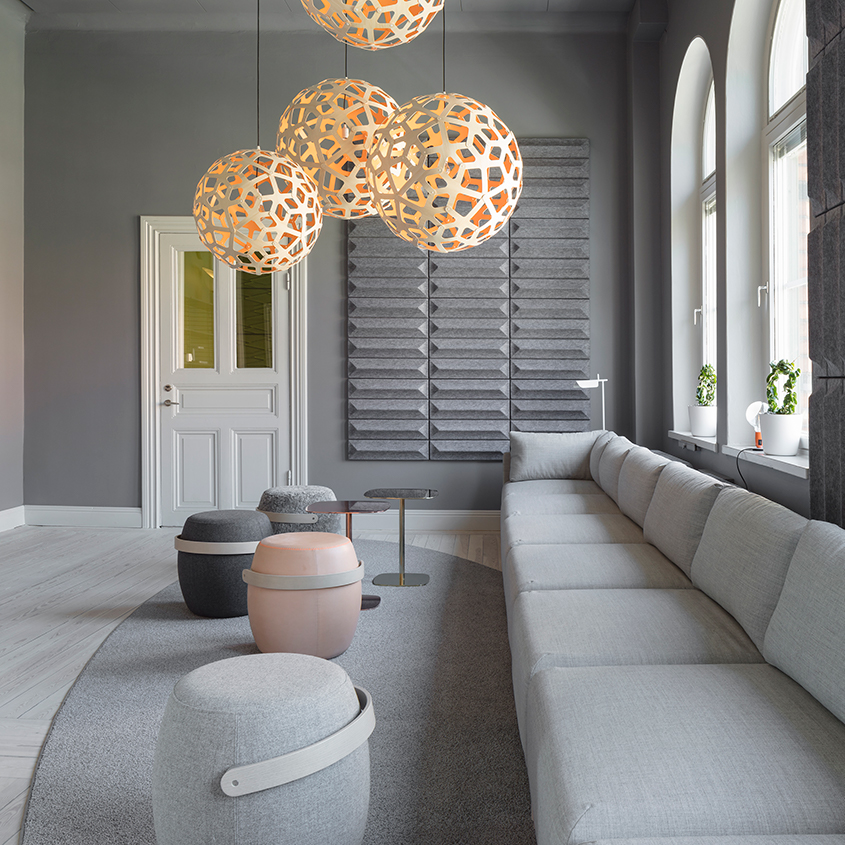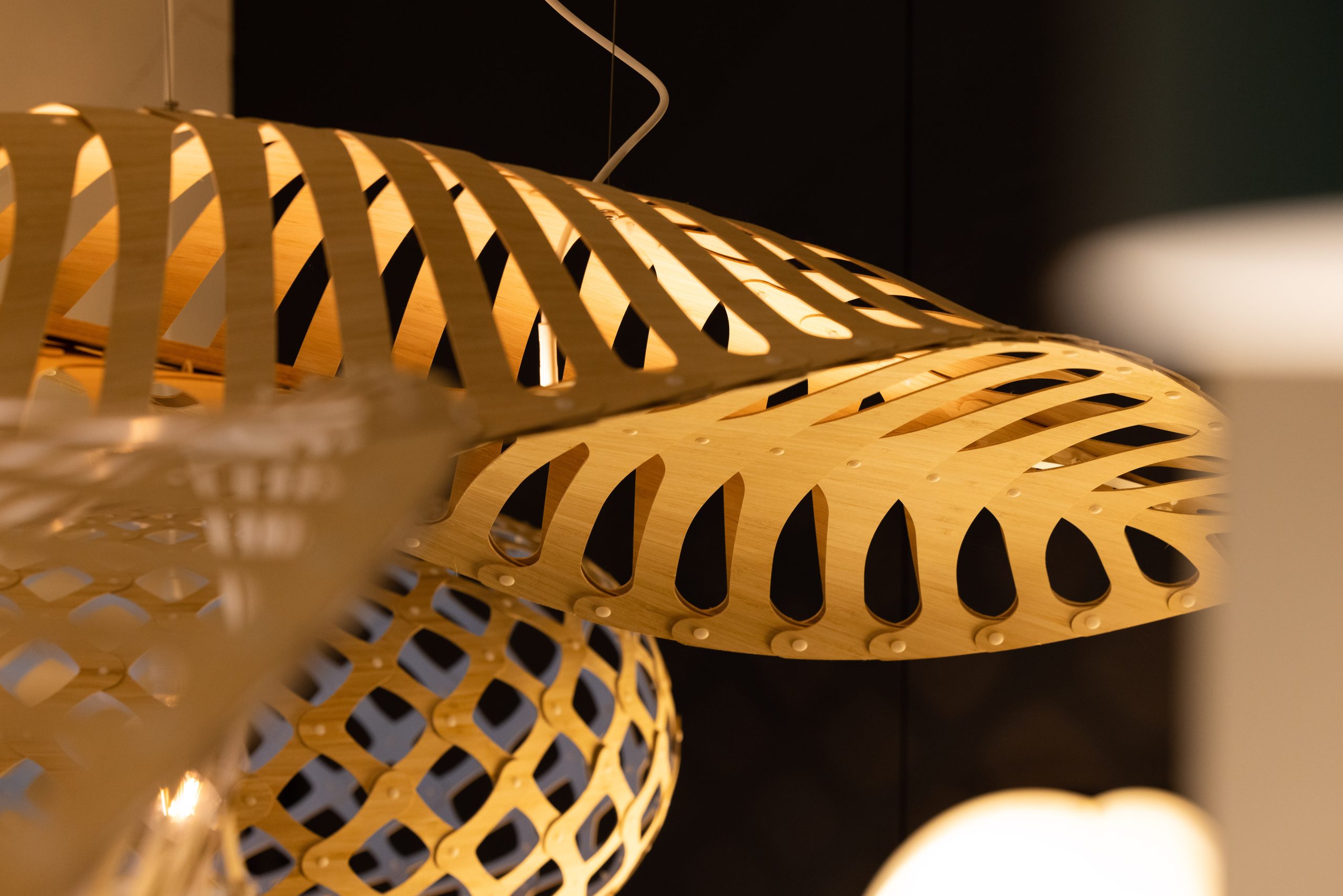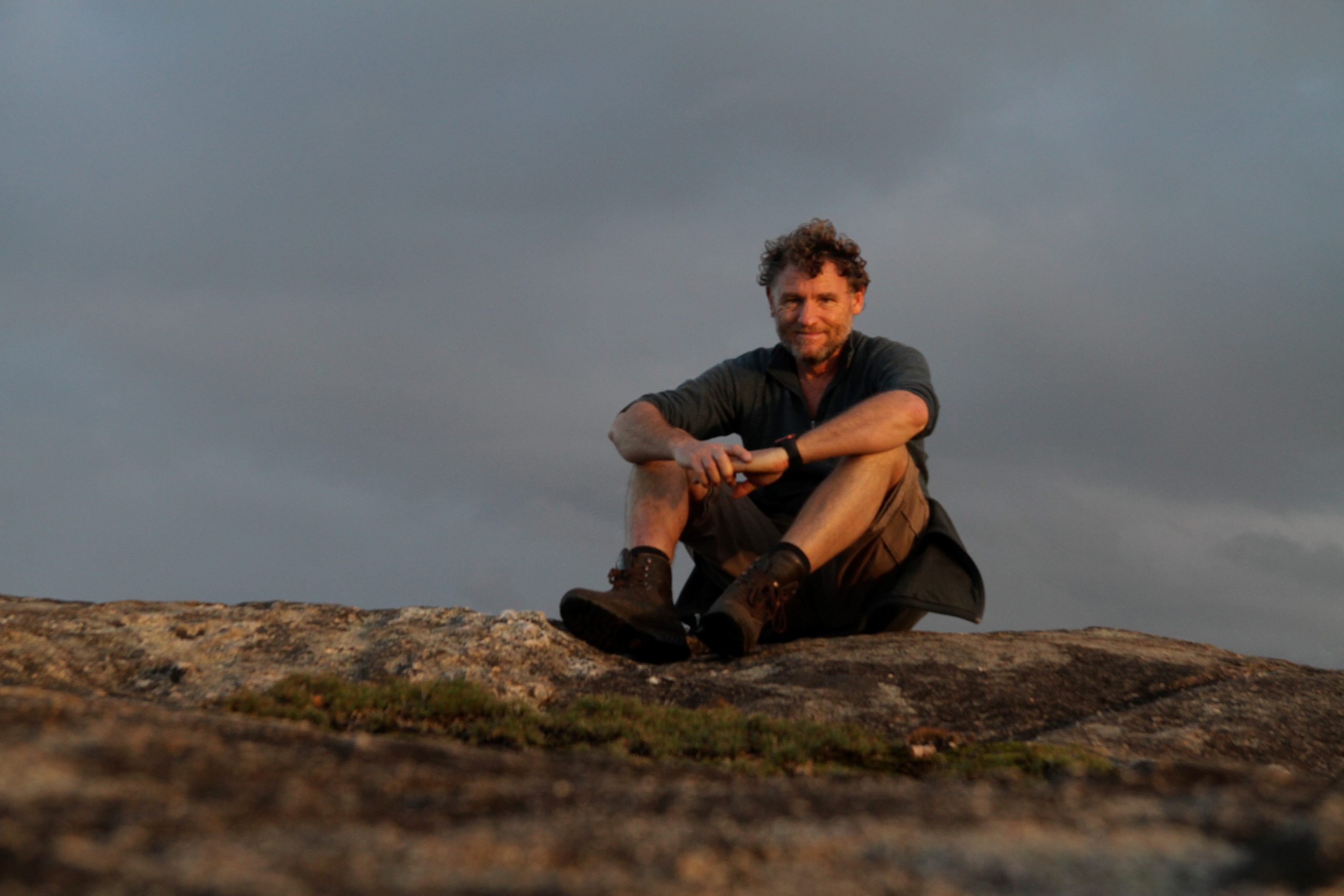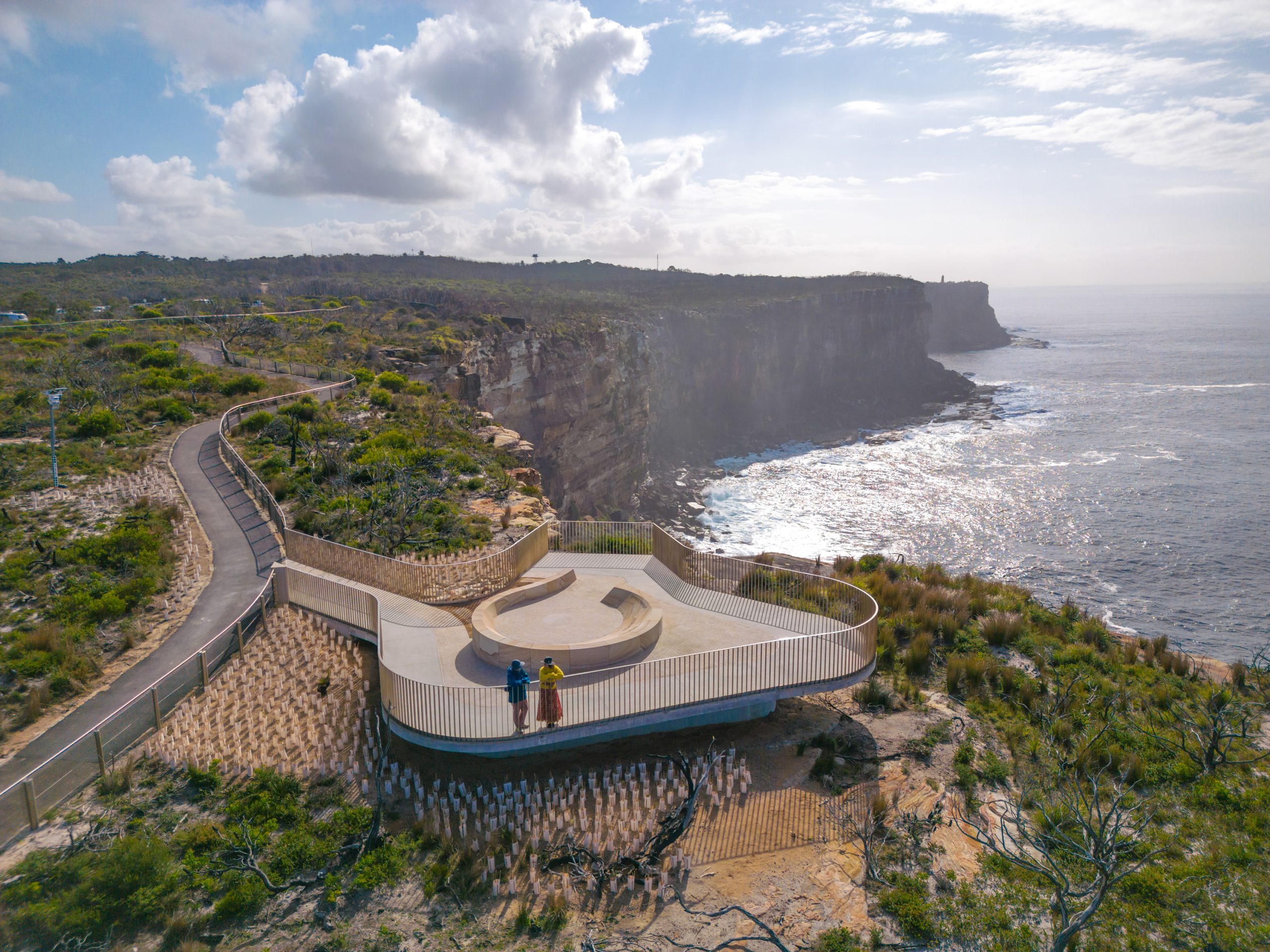Lighting the way for sustainable design
New Zealand’s best known furniture designer David Trubridge celebrates 20 years of his iconic pendant light
David Trubridge is not one for standing still.
Whether it’s finding his own path in seldom explored parts of the world, or reviewing the production processes of his internationally recognised lighting range, the English-born designer is, it would seem, in a constant state of movement.
That’s not to say he is always working.
For Trubridge, who has made his life in Aotearoa New Zealand, taking time to explore areas as diverse as Antarctica and Iceland through to Patagonia and remote parts of Australia, is about giving himself time just to be.
In Australia recently to celebrate the 20th anniversary of his emblematic Coral light at the Sydney Mondoluce store, as well as their affiliates in Brisbane and Hobart, he made time to take a hike through Tasmania.
“I need that ability to recharge,” he says. “I love to get right off the trail because when you stick to the path, there’s a safety factor where you know you will always find your way back.
“I want to find my own course, and see where it leads me. That’s my design philosophy too.”

Trubridge’s path to success is the stuff of legend. A self-taught designer and furniture maker, he studied naval design and had already enjoyed professional success on a small scale while living in the UK, initially creating pieces of furniture for his family and smaller clients before expanding to commissions for significant sites such the Victoria & Albert Museum and St Mary’s Cathedral In Edinburgh.
In the 1980s, Trubridge and his wife Linda decided to sell their house, buy a yacht and set sail with their two children, arriving in Aotearoa New Zealand in 1985. By 1988, he had exhibited at the National Furniture Exhibition at Auckland Museum.
As his opportunities expanded, the Trubridges sold their yacht in the early 1990s, using the money to fund building their own home — and a studio for David. Local interest in their house was such that Trubridge went on to design a number of homes in the area.

Designs for more furniture followed, notably, the Body Raft bench, which Trubridge took to the Milan Furniture Fair in 2000, where it was picked up by Italian design powerhouse Capellini.
Interested in the applications of plywood but, Trubridge turned his attention to lighting, resulting in the Coral design. Again, Trubridge made the trip to Milan in 2004, where it was warmly received — and an ‘overnight success’ story was born.
”I was a guy in a shed in the backyard when Capellini picked up the Body Raft bench,” he says. “The market for handmade furniture in New Zealand was very small and I was looking for a bigger market.”
Twenty years on, the Coral design has been joined by a range of biophilic pendant lights, including the Toru, the Navicula and the Kōura. All made from bamboo plywood and shipped out to clients in kit form to reduce the amount of packaging and space required, the lights are designed to be both sculptural and throw shadow patterns.

While the lights are highly successful commercially, it’s evident that Trubridge continues to strive for improvement, particularly in terms of environmental impacts.
“The design process does not really change much for me,” he says. “It is more important for me where we source the materials,” he says. “A lot of the embodied energy you can’t recycle. I would like to source a new material that is of our land, that is compostable and recycled. I’ve been looking at New Zealand flax which is very fibrous, like hemp.”
In the meantime, he has eliminated almost all plastics from the production process in recent years and he is exploring energy efficient lighting options beyond LEDs. For every Toru light sold, $50 goes to Sustainable Coastlines, a New Zealand charity committed to keeping the country’s beaches clean and plastic free.
While there is still much work to be done in terms of sustainability, Trubridge is hopeful.
“There is an awful long way to go but the mood is there, I think. There will be some big changes,” he says.
“We are trying to achieve sustainability and we are working towards it. We are always trying to improve and do better. How can we supply the things that people need that have the least impact?”
Only time — and more work — will tell.
This stylish family home combines a classic palette and finishes with a flexible floorplan
Just 55 minutes from Sydney, make this your creative getaway located in the majestic Hawkesbury region.
Continued stagflation and cost of living pressures are causing couples to think twice about starting a family, new data has revealed, with long term impacts expected
Australia is in the midst of a ‘baby recession’ with preliminary estimates showing the number of births in 2023 fell by more than four percent to the lowest level since 2006, according to KPMG. The consultancy firm says this reflects the impact of cost-of-living pressures on the feasibility of younger Australians starting a family.
KPMG estimates that 289,100 babies were born in 2023. This compares to 300,684 babies in 2022 and 309,996 in 2021, according to the Australian Bureau of Statistics (ABS). KPMG urban economist Terry Rawnsley said weak economic growth often leads to a reduced number of births. In 2023, ABS data shows gross domestic product (GDP) fell to 1.5 percent. Despite the population growing by 2.5 percent in 2023, GDP on a per capita basis went into negative territory, down one percent over the 12 months.
“Birth rates provide insight into long-term population growth as well as the current confidence of Australian families,” said Mr Rawnsley. “We haven’t seen such a sharp drop in births in Australia since the period of economic stagflation in the 1970s, which coincided with the initial widespread adoption of the contraceptive pill.”
Mr Rawnsley said many Australian couples delayed starting a family while the pandemic played out in 2020. The number of births fell from 305,832 in 2019 to 294,369 in 2020. Then in 2021, strong employment and vast amounts of stimulus money, along with high household savings due to lockdowns, gave couples better financial means to have a baby. This led to a rebound in births.
However, the re-opening of the global economy in 2022 led to soaring inflation. By the start of 2023, the Australian consumer price index (CPI) had risen to its highest level since 1990 at 7.8 percent per annum. By that stage, the Reserve Bank had already commenced an aggressive rate-hiking strategy to fight inflation and had raised the cash rate every month between May and December 2022.
Five more rate hikes during 2023 put further pressure on couples with mortgages and put the brakes on family formation. “This combination of the pandemic and rapid economic changes explains the spike and subsequent sharp decline in birth rates we have observed over the past four years,” Mr Rawnsley said.
The impact of high costs of living on couples’ decision to have a baby is highlighted in births data for the capital cities. KPMG estimates there were 60,860 births in Sydney in 2023, down 8.6 percent from 2019. There were 56,270 births in Melbourne, down 7.3 percent. In Perth, there were 25,020 births, down 6 percent, while in Brisbane there were 30,250 births, down 4.3 percent. Canberra was the only capital city where there was no fall in the number of births in 2023 compared to 2019.
“CPI growth in Canberra has been slightly subdued compared to that in other major cities, and the economic outlook has remained strong,” Mr Rawnsley said. “This means families have not been hurting as much as those in other capital cities, and in turn, we’ve seen a stabilisation of births in the ACT.”
This stylish family home combines a classic palette and finishes with a flexible floorplan
Just 55 minutes from Sydney, make this your creative getaway located in the majestic Hawkesbury region.

















